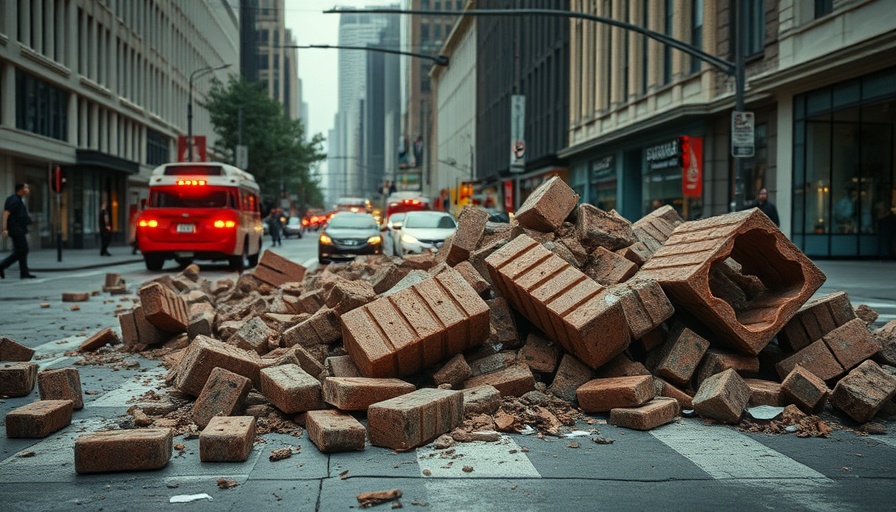
Brick Facade Collapse: A Reminder of Urban Safety
In a startling incident that unfolded on Tuesday night, a partial building collapse was reported in downtown Kansas City, specifically in the 1200 block of Wyandotte Street. At approximately 8:30 PM, first responders found parts of the brick facade and parapet of a building had crumbled onto the sidewalk and street below, fortunately resulting in no injuries. This situation raises critical questions about urban safety standards and the maintenance of older structures in our rapidly evolving city.
Understanding the Dynamics of Urban Infrastructure
As Kansas City grows, the integrity of its infrastructure becomes paramount. Buildings constructed decades ago might not meet modern safety standards. Regular inspections and maintenance are essential to ensuring that older edifices remain safe for public use, especially in bustling areas where foot traffic is high.
This incident serves as a wake-up call for local government officials and urban planners to advocate for stricter building regulations and regular maintenance checks. In light of Kansas City’s diverse array of historic buildings, preserving these structures while ensuring they meet safety standards is a balancing act that requires a proactive approach.
The Role of Community Engagement in Urban Safety
Local residents and businesses have a vested interest in the safety of their neighborhoods. Community engagement is essential in building a safer Kansas City. Residents can voice their concerns about building conditions at public meetings or through local city council channels. Recent Kansas City city council updates indicate increased opportunities for civic engagement, allowing citizens to take part in discussions about local legislation and infrastructure improvements. Engaging with issues such as building inspections can significantly impact community safety.
Building Safety: A Civic Responsibility
Kansas City's active community plays a pivotal role in addressing local issues. By participating in local politics and voicing concerns over building safety, residents influence the city's governance. The ongoing Kansas City elections drive home the importance of having informed voters who understand the implications of infrastructure policies.
Moreover, as the city grapples with its political issues, individuals can take individual actions, such as advocating for community action initiatives that push for better infrastructure safety regulations. In essence, public awareness and engagement can lead to significant improvements in the standards set forth to protect Kansas City's residents.
The Path Forward: Ensuring Structural Integrity
Looking ahead, Kansas City must prioritize the structural integrity of its buildings as part of its growth strategy. Historical buildings that might crumble pose risks not only to pedestrians but also compromise the reputation of the city as a safe place to live and work. Thus, advocating for comprehensive building assessments can serve as a foundation for ongoing community discussions about safety and urban development.
Moreover, collaboration between city officials and residents can result in strategies that address infrastructure vulnerabilities, thereby enhancing public safety and community trust in local governance.
Summary: Building a Safer Kansas City Together
The collapse of the brick facade on Wyandotte Street underscores the need for vigilance regarding infrastructural safety in Kansas City. While no injuries occurred in this instance, it's a vivid reminder of the potential hazards that exist within older buildings. As we push forward, it is imperative for local residents and city officials to work collaboratively to address these safety issues.
Now more than ever, it's essential to participate in local public meetings and engage with local governance to ensure Kansas City can continue to thrive safely as a vibrant urban center. The community must unite to foster civic engagement and push for legislation that promotes safety and well-being in our neighborhoods.
 Add Row
Add Row  Add
Add 





Write A Comment